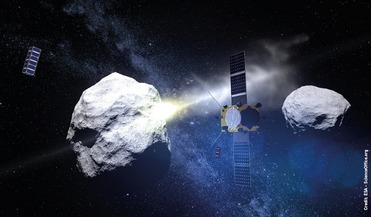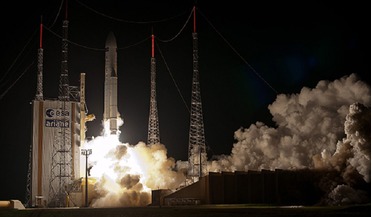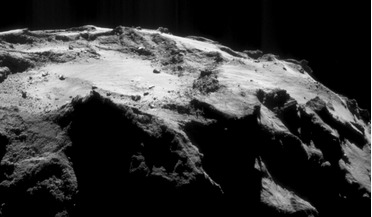 October 2015
Taking AIM with ESA: proposing the first visit to a binary asteroid system
October 2015
Taking AIM with ESA: proposing the first visit to a binary asteroid system
... mass of 800kg – less than a third of Rosetta’s launch mass. Measuring 1.8 x 2.0 x 2.1m across with solar arrays stowed, the spacecraft design is a simple one with fixed solar arrays, a fixed high-gain antenna and a bipropellant propulsion system...
 August 2016
Rosetta overcomes major setback
August 2016
Rosetta overcomes major setback
... as a failure by the fault detection and recovery logic. Also the whole swing-by scenario had to be re-designed to establish a spacecraft configuration that would minimise power consumption whilst in the shadow. It was not an easy task but we had...
 January 2017
New oceans beckon for solar sail technology
January 2017
New oceans beckon for solar sail technology
... National Oceanic and Atmospheric Administration (NOAA) has expressed interest in placing a long-duration solar storm warning spacecraft closer to the Sun, yet always between the Earth and Sun, so as to enable rapid warning of an impending solar...
 March 2017
Rosetta – outstanding climax to pioneering mission
March 2017
Rosetta – outstanding climax to pioneering mission
...a planned ‘excursion’ to study the coma structure at distances up to 1500 km from the nucleus, we started to gradually decrease the spacecraft distance to the surface, and by the end of 2015 we were back to closed orbits. This explained the 18-minute...
 September 2017
Measuring space debris risk
September 2017
Measuring space debris risk
... flat at 500 in any given year in the range. Therefore, we have 10 ‘serious anomaly’ debris strikes on 5,000 available spacecraft overall in this 10-year period. This gives us a ‘ballpark’ serious historical anomaly rate of one in 500 satellites per...
 March 2018
Mapping the dark universe
March 2018
Mapping the dark universe
...several million galaxies will be imaged. Regular observations for instrument calibration and sample characterisation The Euclid spacecraft is equipped with a 1.2 m three-mirror Korsch-type telescope and two instruments, a visible imager, VIS, and the...